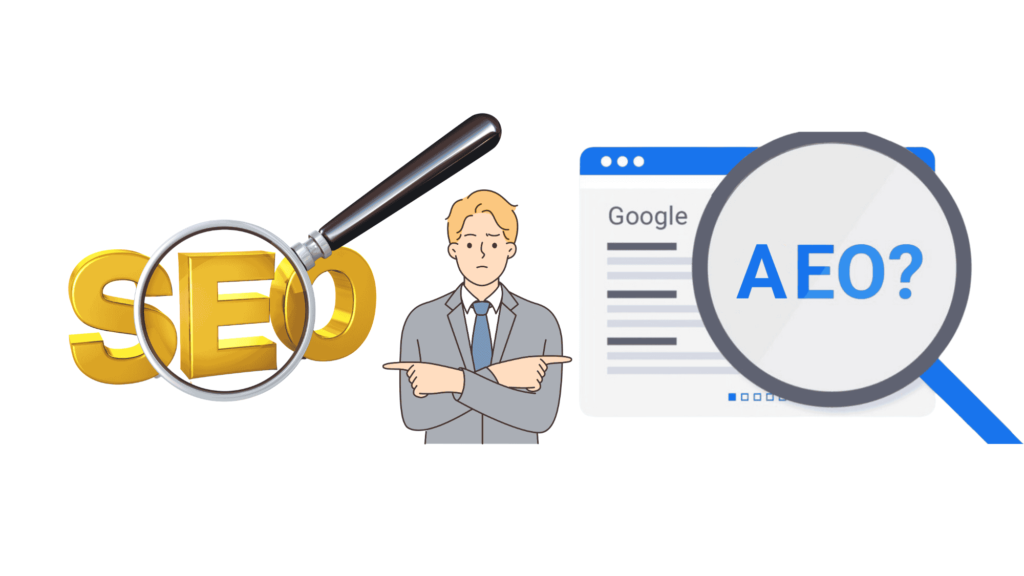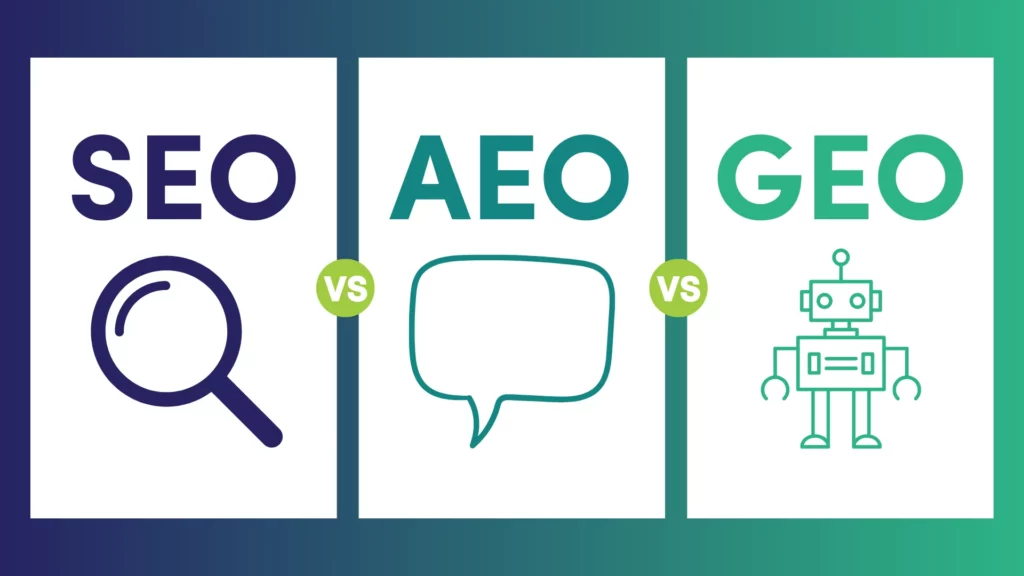A GEO agency specializes in Generative Engine Optimization, a cutting-edge digital marketing discipline designed to optimize content for AI-powered search platforms like Google’s Gemini and Bing Chat. Unlike traditional SEO firms that focus on ranking websites higher in search engine results pages (SERPs), GEO agencies prepare content to be interpreted, summarized, and cited by large language models and generative AI systems.
The distinction matters because user search behavior has shifted dramatically. People increasingly rely on AI-generated summaries and zero-click answers rather than scrolling through traditional search listings. Partnering with a GEO agency Australia ensures your content is optimized for these emerging AI-driven platforms, giving your brand visibility where it truly matters.
This article examines how generative engine optimization diverges from conventional SEO across eight critical dimensions.
- Content strategy and structure
- Optimization objectives
- Performance measurement
- Technical implementation
- Content production workflows
- User experience implications
- Industry-specific applications
- Strategic integration possibilities
Understanding these differences helps businesses navigate the changing search landscape where AI systems increasingly mediate information discovery.
What Do GEO Agencies Specialize In?
A GEO agency specializes in optimizing digital content for AI-powered search platforms that generate direct answers rather than traditional link lists. These agencies focus on making content easily interpretable, citable, and trustworthy for large language models and generative AI systems.
The primary expertise of a GEO agency centers on creating AI-friendly content that appears in AI-generated summaries, overviews, and conversational responses. Platforms like Google’s Gemini, Bing Chat, Perplexity AI, and ChatGPT with web search capabilities rely on sophisticated algorithms to extract, synthesize, and present information from across the web. GEO agencies understand how these systems evaluate content quality, relevance, and authority.
Semantic Content Structuring
Semantic content structuring forms the backbone of GEO specialization. Rather than simply inserting keywords, these agencies craft content with clear entity relationships, logical hierarchies, and contextual depth that AI models can parse accurately. This involves:
- Organizing information with explicit topic clusters and subtopic relationships
- Using precise terminology that aligns with knowledge graphs and entity databases
- Structuring sentences for clarity and factual extraction
- Implementing natural language patterns that match conversational queries
Schema Markup
Schema markup represents another critical specialization area. GEO agencies deploy advanced structured data vocabularies—including Article, FAQPage, HowTo, Product, and specialized schemas—to provide explicit signals about content meaning. This markup helps AI engines understand not just what content says, but what it represents: whether it’s a verified statistic, an expert opinion, a step-by-step process, or a comparative analysis.
The technical implementation extends to entity recognition optimization, where agencies ensure proper nouns, concepts, and relationships are clearly defined for AI interpretation and accurate citation in generated responses.
How Do Content Strategies Differ Between GEO Agencies and Traditional SEO Firms?
GEO agencies prioritize AI-friendly content through semantic optimization, structuring information in ways that large language models can easily parse and cite. Traditional SEO firms concentrate on keyword density, strategic placement of target phrases, and building backlink profiles to signal authority to search algorithms.
The content architecture differs fundamentally between these approaches:
GEO Content Characteristics:
- Factual, concise statements with clear attributions
- Entity-rich language that AI systems recognize
- Structured data markup defining relationships between concepts
- Answer-oriented formatting addressing specific queries
- Verifiable statistics and data points for citation accuracy
Traditional SEO Content Characteristics:
- Keyword-optimized headlines and subheadings
- Natural language flow designed for human readability
- Persuasive elements encouraging user engagement
- Internal linking structures guiding visitor navigation
- Content length optimized for ranking potential
GEO creates content specifically tailored for AI citation rather than direct human consumption. A GEO agency might structure an article about renewable energy with explicit entity definitions, statistical data points in standardized formats, and schema markup identifying key facts—making it simple for generative engines to extract and reference specific information in their responses.
Traditional SEO firms develop content targeting human searcher engagement. The same renewable energy article would emphasize compelling narratives, strategic keyword integration throughout the text, meta descriptions designed to improve click-through rates, and persuasive calls-to-action encouraging conversions.
Semantic optimization in GEO extends beyond keywords to encompass meaning, context, and relationships between concepts. This approach ensures AI systems understand not just what words appear in content, but how ideas connect and which information holds authority within specific domains.
What Are The Different Optimization Goals For GEO Agencies Compared To Traditional SEO Firms?
GEO agencies prioritize securing AI citations within generative search responses, positioning content as a trusted source that AI engines reference when synthesizing answers. The primary objective centers on appearing in AI-generated summaries, overviews, and direct responses where algorithms pull information from multiple sources to construct comprehensive answers. This visibility occurs before users ever click through to a website, fundamentally changing how content gains exposure.
Traditional SEO firms concentrate on elevating website positions within search engine results pages to maximize organic traffic. The strategy revolves around capturing clicks by ranking prominently for target keywords, with success tied directly to users navigating from search results to the actual website. Every optimization effort—from meta descriptions to title tags—serves the singular purpose of improving click-through rates from SERP listings.
The distinction becomes clear when examining end results:
GEO Optimization Targets:
- Inclusion as a cited source in AI-generated answer boxes
- Attribution within conversational AI responses
- Prominence in zero-click search features
- Recognition by language models as authoritative references
Traditional SEO Optimization Targets:
- Higher rankings for competitive keywords
- Increased visibility in standard search listings
- Greater click-through rates from SERPs
- Enhanced domain authority through backlink profiles
GEO agencies measure success by how frequently AI systems reference their content, while traditional SEO firms track how many users arrive at websites through search listings. This fundamental difference in objectives shapes every tactical decision, from content formatting to technical implementation, reflecting the divergent paths these approaches take in capturing search visibility.

How Do Success Metrics Vary For GEO Agencies And Traditional SEO Firms?
GEO agencies measure success through citation frequency in AI-generated responses and the accuracy of how their content appears in AI summaries. These firms track how often AI platforms like Google’s Gemini or Bing Chat reference their content when answering user queries, alongside monitoring referral traffic from AI platforms that link back to source material.
The contextual accuracy metric examines whether AI engines present the information correctly without distortion or misattribution. GEO specialists also measure visibility in AI overviews—the featured snippets that appear at the top of search results powered by generative AI. Brand mention prominence within AI responses serves as another key indicator, showing whether the content establishes authority in its field.
Traditional SEO firms rely on fundamentally different performance indicators:
- Keyword rankings across target search terms
- Click-through rates (CTR) from search results to website pages
- Bounce rate measuring how quickly visitors leave after arriving
- Time on page indicating content engagement depth
- Conversion rates tracking desired user actions like purchases or sign-ups
- Domain authority reflecting overall site credibility
- Backlink quality and quantity demonstrating external validation
The measurement divergence reflects each approach’s core purpose. Traditional SEO metrics center on driving human traffic to websites and converting visitors into customers. GEO metrics focus on becoming the authoritative source that AI systems trust and cite, even when users never click through to the original website. This creates a paradigm where visibility exists within AI-generated content itself rather than through traditional web traffic channels.
What Technical Approaches Set GEO Agencies Apart From Traditional SEO Firms?
Semantic Optimization Techniques
GEO agencies employ semantic optimization techniques that enable AI systems to understand content meaning rather than just matching keywords. These methods include vector embeddings, which transform text into numerical representations that AI models use to assess content relevance and relationships between concepts.
Entity Recognition
Entity recognition forms a cornerstone of GEO technical work. This process identifies and tags specific people, places, organizations, and concepts within content, allowing AI engines to extract precise information for citations. When combined with conversational optimization, content becomes structured to answer questions naturally—mirroring how users interact with AI chatbots and voice assistants.
Query Fan-Out Compatibility
GEO specialists implement query fan-out compatibility, anticipating related questions users might ask beyond their initial search. Content gets structured to address multiple angles of a topic simultaneously, increasing the probability of AI citation across various query types.
Technical Channels of Traditional SEO Firms
Traditional SEO firms operate through different technical channels:
- Manual keyword research using tools to identify high-volume search terms
- Backlink building campaigns to establish domain authority
- Site speed optimization through image compression and code minification
- Mobile responsiveness testing and implementation
- Meta tag optimization for titles and descriptions
Target Interpreter Difference
The fundamental difference lies in the target interpreter. Traditional SEO optimizes for algorithms that rank pages based on relevance signals and authority indicators. GEO optimizes for AI systems that synthesize information from multiple sources, requiring content to be machine-readable at a semantic level rather than simply keyword-rich.
Schema Markup Usage
Schema markup usage differs significantly between approaches. While traditional SEO applies basic structured data for rich snippets, GEO agencies implement comprehensive schema vocabularies that help AI engines understand content context, relationships, and factual accuracy with precision.
How Does Content Creation Differ Between The Two Approaches?
GEO agencies leverage AI-assisted content generation to produce highly structured, citation-ready material at scale. These agencies deploy large language models and natural language processing tools to create concise, fact-dense content blocks that AI search engines can easily extract and reference. The output prioritizes verifiable statistics, clear attributions, and modular information chunks designed for algorithmic parsing rather than narrative flow.
The content format reflects this purpose:
- Bullet-pointed data summaries that AI engines can quote directly
- Structured answer blocks responding to specific question patterns
- Statistical claims with embedded source references for credibility verification
- Schema-enhanced content sections marking entities, dates, and relationships
Traditional SEO firms take a fundamentally different path. Content creation centers on human writers crafting engaging narratives, persuasive copy, and emotionally resonant stories. The goal involves capturing reader attention, encouraging page exploration, and driving conversion actions through compelling storytelling techniques.
Traditional SEO content characteristics include:
- Long-form articles building topical authority through comprehensive coverage
- Creative headlines and subheadings optimized for click-through appeal
- Multimedia integration (images, videos, infographics) enhancing user engagement
- Personality-driven writing establishing brand voice and reader connection
The production velocity differs dramatically. GEO agencies can generate hundreds of optimized content pieces weekly using AI tools, while traditional SEO content requires more time investment per piece to ensure quality, originality, and engagement value. This distinction reflects each approach’s core purpose: GEO prioritizes factual information density for machine consumption, whereas traditional SEO balances search optimization with human readability and persuasive communication.
Moreover, with the rise of AI search engines, it’s essential to optimize content rank in AI search results which is a crucial aspect that traditional SEO firms are beginning to incorporate into their strategies.
How Each Approach Affects User Experience Differently
GEO fundamentally changes how users consume information by enabling zero-click answers and summarized responses directly within AI interfaces. When content is optimized for generative engines, users receive immediate, synthesized answers without needing to navigate to external websites. AI systems like ChatGPT, Gemini, or Perplexity pull from GEO-optimized sources to construct comprehensive responses that satisfy queries instantly.
Traditional SEO creates a different user journey entirely. The approach assumes users will click through search result listings to access full website content. This model relies on compelling meta descriptions, title tags, and snippet optimization to attract clicks from SERPs. Users must actively choose which link to visit, then navigate the website to find their desired information.
The distinction reshapes content consumption patterns:
- GEO users receive curated information without leaving the AI interface
- SEO users engage in active browsing, comparing multiple sources across different websites
- GEO experiences prioritize efficiency and immediate answers
- SEO experiences encourage deeper exploration and brand interaction through website visits

Why Is Industry Relevance Important For GEO Agencies?
AI engines evaluate content credibility differently across sectors, making industry-specific optimization essential for GEO success. Academic and historical content requires authoritative language with proper citations to establish expertise, as AI systems prioritize scholarly sources when generating educational responses.
Legal and financial sectors demand meticulously sourced statistics and regulatory compliance markers. AI platforms verify data accuracy before citing these high-stakes industries, requiring GEO agencies to implement verification protocols and reference authoritative databases.
Technical fields present unique challenges:
- Precise schema markup for product specifications and technical documentation
- Structured data for API documentation and software guides
- Entity recognition for industry-specific terminology
Healthcare content needs medical authority signals through professional credentials and peer-reviewed sources. E-commerce requires product schema with accurate attributes, pricing data, and availability information formatted for AI shopping assistants.
Each vertical demands tailored optimization strategies that align with how AI systems assess trustworthiness and relevance within that specific domain. Generic approaches fail because AI engines apply sector-specific evaluation criteria when selecting content for citations. Read more about GEO Marketing Agency framework for capturing AI search visibility.
Can The Two Approaches Coexist In Digital Marketing Strategy?
GEO and traditional SEO work as complementary strategies instead of competing options. Businesses gain the most by using both methods at the same time to understand all types of search behavior.
Traditional SEO still brings traffic to websites through search engine results page (SERP) rankings, while GEO makes sure content shows up in AI-generated summaries and zero-click answers. This combined strategy caters to users who click on website links and those who depend on AI-generated responses.
The integration potential between these two methods creates a complete online presence:
- Traditional SEO builds domain authority and backlink profiles that signal credibility to both conventional search engines and AI systems
- GEO’s structured data and semantic optimization enhance how AI platforms interpret and cite content
- Keyword research from SEO informs the conversational queries GEO targets
- Quality content created for human engagement (SEO) provides the authoritative source material AI engines reference (GEO)
Brands adopting this hybrid framework position themselves for visibility across traditional search results, AI overviews, chatbot responses, and voice assistant answers—meeting audiences wherever they seek information.


